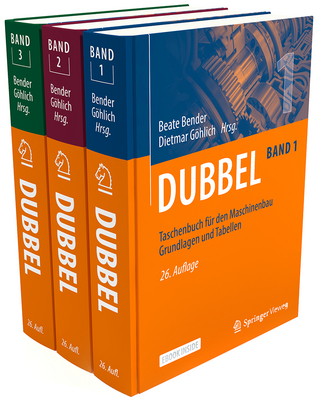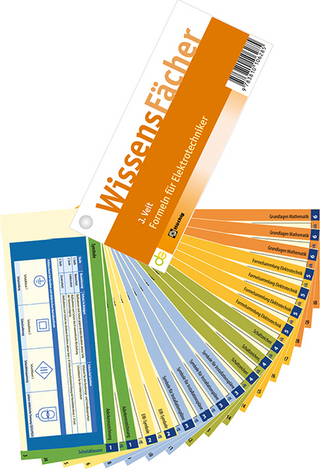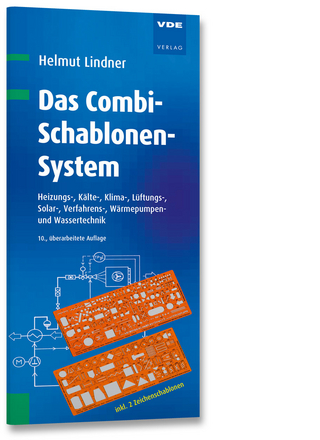
Thermal Radiation Heat Transfer, 5th Edition
Crc Press Inc
978-1-4398-0533-6 (ISBN)
- Titel erscheint in neuer Auflage
- Artikel merken
Providing a comprehensive overview of the radiative behavior and properties of materials, the fifth edition of this classic textbook describes the physics of radiative heat transfer, development of relevant analysis methods, and associated mathematical and numerical techniques. Retaining the salient features and fundamental coverage that have made it popular, Thermal Radiation Heat Transfer, Fifth Edition has been carefully streamlined to omit superfluous material, yet enhanced to update information with extensive references.
Includes four new chapters on Inverse Methods, Electromagnetic Theory, Scattering and Absorption by Particles, and Near-Field Radiative Transfer
Keeping pace with significant developments, this book begins by addressing the radiative properties of blackbody and opaque materials, and how they are predicted using electromagnetic theory and obtained through measurements. It discusses radiative exchange in enclosures without any radiating medium between the surfaces—and where heat conduction is included within the boundaries. The book also covers the radiative properties of gases and addresses energy exchange when gases and other materials interact with radiative energy, as occurs in furnaces.
To make this challenging subject matter easily understandable for students, the authors have revised and reorganized this textbook to produce a streamlined, practical learning tool that:
Applies the common nomenclature adopted by the major heat transfer journals
Consolidates past material, reincorporating much of the previous text into appendices
Provides an updated, expanded, and alphabetized collection of references, assembling them in one appendix
Offers a helpful list of symbols
With worked-out examples, chapter-end homework problems, and other useful learning features, such as concluding remarks and historical notes, this new edition continues its tradition of serving both as a comprehensive textbook for those studying and applying radiative transfer, and as a repository of vital literary references for the serious researcher.
John R. Howell is presently Research Professor at the University of Texas-Austin. He previously was a heat transfer researcher at the NASA Lewis Research Center, and a professor at the University of Houston. Dr. Howell served as Program Director of the Thermal Transport and Thermal Processing Program with the National Science Foundation from 1994-1995. He is a member of the National Academy of Engineering, a Foreign Member of the Russian Academy of Science, as well as being a Fellow of ASME and AIAA. He has received numerous achievement awards. M. Pinar Mengüç received his Ph.D from Purdue University and has been Engineering Alumni Association Professor of Mechanical Engineering at the University of Kentucky. He has made significant contributions to the field of thermal radiation heat transfer, particularly in the areas of radiative transfer modeling in multidimensional geometries, inverse radiation problems, laser diagnostics in combustion systems, particle characterization, and nano-scale thermal transport including near-field radiation transfer. Dr. Mengüç was elected as an Honorary Professor, ESPOL, Guayaquil, Ecuador and is a Fellow of both ASME and ICHMT. He presently serves as Editor-in-Chief for the Journal of Quantitative Spectroscopy and Radiative Transfer. Currently he is the Drector of Center for Energy, Environment and Economy at Ozyegin University in Istanbul, Turkey. Robert Siegel, Sc.D. is presently a heat transfer consultant. Prior to this he was a Senior Research Scientist at NASA Lewis Research Center, where he worked on heat transfer research for 44 years. Dr. Siegel is a Fellow of both ASME and AIAA. He has received numerous achievement awards, authored 185 technical papers, and taught graduate level courses as an adjunct professor at three universities.
Introduction to Radiative Transfer
Importance of Thermal Radiation in Engineering
Thermal Energy Transfer
Thermal Radiative Transfer
Radiative Energy Exchange and Radiative Intensity
Characteristics of Emission
Radiative Energy Loss and Gain Along a Line-of-Sight
Radiative Transfer Equation
Radiative Transfer in Nonparticipating Enclosures
Definitions of Properties at Interfaces
Emissivity
Absorptivity
Reflectivity
Transmissivity at an Interface
Relations among Reflectivity, Absorptivity, Emissivity, and Transmissivity
Radiative Properties of Opaque Materials
Electromagnetic Wave Theory Predictions
Extensions of the Theory for Radiative Properties
Measured Properties of Real Dielectric Materials
Measured Properties of Metals
Selective and Directional Opaque Surfaces
Configuration Factors for Diffuse Surfaces with Uniform Radiosity
Radiative Transfer Equation for Surfaces Separated by a Transparent Medium
Geometric Configuration Factors between Two Surfaces
Methods for Determining Configuration Factors
Constraints on Configuration Factor Accuracy
Compilation of Known Configuration Factors and Their References—Appendix C and Web Catalog
Radiation Exchange in Enclosures Composed of Black and/or Diffuse-Gray Surfaces
Approximations and Restrictions for Analysis of Enclosures with Black and/or Diffuse-Gray Surfaces
Radiative Transfer for Black Surfaces
Radiation Between Finite Diffuse-Gray Areas
Radiation Analysis Using Infinitesimal Areas
Computer Programs for Enclosure Analysis
Exchange of Thermal Radiation among Nondiffuse Nongray Surfaces
Enclosure Theory for Diffuse Nongray Surfaces
Directional-Gray Surfaces
Surfaces with Directionally and Spectrally Dependent Properties
Radiation Exchange in Enclosures with Some Specularly Reflecting Surfaces
Net-Radiation Method in Enclosures Having Specular and Diffuse Reflecting Surfaces
Multiple Radiation Shields
Radiation Combined with Conduction and Convection at Boundaries
Energy Relations and Boundary Conditions
Radiation Transfer with Conduction Boundary Conditions
Radiation with Convection and Conduction
Numerical Solution Methods
Numerical Integration Methods for Use with Enclosure Equations
Numerical Formulations for Combined-Mode Energy Transfer
Numerical Solution Techniques
Monte Carlo Method
Inverse Problems in Radiative Heat Transfer
Introduction to Inverse Problems
General Inverse Solution Methods
Comparison of Methods for a Particular Problem
Application of Metaheuristic Methods
Unresolved Problems
Inverse Problems Involving Participating Media
Absorption and Emission in Participating Media
Spectral Lines and Bands for Absorption and Emission of Gases
Band Models and Correlations for Gas Absorption and Emission
Total Gas-Total Emittance Correlations
Mean Absorption Coefficients
True Absorption Coefficient
Radiative Properties of Translucent Liquids and Solids
Radiative Transfer Relations in Simple Systems
Energy Equation and Boundary Conditions for a Translucent Medium with Radiation
Radiative Transfer and Source Function Equations
Radiative Flux and its Divergence Within a Medium
Summary of Relations for Radiative transfer in Absorbing, Emitting, and Scattering Media
Net-Radiation Method for Enclosures Filled with an Isothermal Medium of Uniform Composition
Evaluation of Spectral Geometric-Mean Transmittance and Absorptance Factors
Mean Beam-Length Approximation for Spectral Radiation From an Entire Volume of a Medium to All or Part of its Boundary
Exchange of Total Radiation in an Enclosure by use of Mean Beam Length
Energy Transfer in Plane Layers and Multidimensional Geometries: Participating Media with and without Conduction
Equations for Radiative Intensity, Flux, Flux Divergence, and Source Function in a Plane Layer
Gray Plane Layer of Absorbing and Emitting Medium with Isotropic Scattering
Gray Plane Layer in Radiative Equilibrium
Radiation Combined with Conduction
Multidimensional Radiation in a Participating Gray Medium with Isotropic Scattering
Transient Solutions Including Conduction
Discussion of Solution Procedures
Optically Thin and Thick Limits for Radiative Transfer in Participating Media
Optically Thin and Cold Media
Optically Thick Medium: Radiative Diffusion
Approximations for Combined Radiation and Conduction
Approximate Solutions for Combined Radiation, Conduction, and Convection in a Boundary Layer
Use of Mean Absorption Coefficients
Curtis-Godson Approximation
Solution of Radiative Transfer in Participating Media
Differential Methods
Discrete Ordinates (SN) Method
Other Methods that Depend on Angular Discretization
Numerical Solution Methods for Combined Radiation, Conduction, and Convection in Participating Media
Finite-Difference Methods
Finite-Element Method (FEM)
Zonal Method
Monte Carlo Technique for Radiatively Participating Media
Numerical Boundary Conditions and Additional Solution Methods
Results for Combined Convection, Conduction, and Radiation
Benchmark Solutions for Computational Validation
Inverse Problems Involving Participating Media
Solution Using Commercially Available and Other Codes
Verification, Validation, and Uncertainty Quantification
Electromagnetic Wave Theory
EM-Wave Equations
Wave Propagation in a Medium
Laws of Reflection and Refraction
Amplitude and Scattering Matrices
EM-Wave Theory and the Radiative Transfer Equation
Absorption and Scattering by Particles and Agglomerates
Absorption and Scattering: Definitions
Scattering by Large Spherical Particles
Scattering by Small Particles
Lorenz-Mie Theory for Spherical Particles
Prediction of Properties for Irregularly Shaped Particles
Approximate Anisotropic Scattering Phase Functions
Dependent Absorption and Scattering
Near-Field Thermal Radiation
Electromagnetic Treatment of Thermal Radiation and Basic Concepts
Evanescent and Surface Waves
Near-Field Radiative Heat Flux Calculations
Experimental Studies of Near-Field Thermal Radiation
Radiative Effects in Translucent Solids, Windows, and Coatings
Transmission, Absorption, and Reflection of Windows
Enclosure Analysis with Partially Transparent Windows
Effects of Coatings or Thin Films on Surfaces
Refractive Index Effects on Radiation in a Participating Medium
Multiple Participating Layers with Heat Conduction
Light Pipes and Fiber Optics
Appendix A: Conversion Factors, Radiation Constants, and Blackbody Functions
Appendix B: Radiative Properties
Appendix C: Catalog of Selected Configuration Factors
Appendix D: Exponential Integral Relations and Two-Dimensional Radiation Functions
Appendix E: List of References
Index
| Erscheint lt. Verlag | 5.10.2010 |
|---|---|
| Zusatzinfo | 1341 Equations - PPI 606; 59 Tables, black and white; 647 Illustrations, black and white |
| Verlagsort | Bosa Roca |
| Sprache | englisch |
| Maße | 178 x 254 mm |
| Gewicht | 1814 g |
| Themenwelt | Technik ► Elektrotechnik / Energietechnik |
| ISBN-10 | 1-4398-0533-4 / 1439805334 |
| ISBN-13 | 978-1-4398-0533-6 / 9781439805336 |
| Zustand | Neuware |
| Haben Sie eine Frage zum Produkt? |
aus dem Bereich



